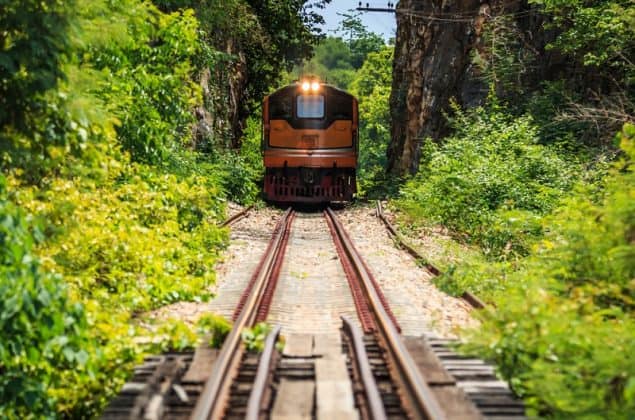
About $5.79 billion will be used to fund railway projects nationwide next year, the Department of Transportation (DOTr) announced, cited in Manila Times.
In 2020, the government awarded 32 contracts. By the end of 2022, 65 contracts are expected to be assigned to contractors.
The transportation department aims to complete 1,200 kilometers of railway routes, 168 stations, and 1381 coaches by the time the current administration steps down. In 2016, when the Duterte government began, there were 77 kilometers of railway routes, 61 stations, and 224 coaches in the country.
Projects in Progress
The construction on several massive infrastructure projects is already in full swing. The LRT-1 Cavite Extension was more than 50 percent completed on the partial operability section as of December 2020, Business World reported. The railway system may begin partial operations on the first five stations by the end of the year. These stations include Redemptorist, MIA, Asia World, Ninoy Aquino, and Dr. Santos.
The last three stations, Las Piñas, Zapote, and Niog Street in Bacoor City, Cavite will be slated for completion in 2022. When finished, LRT-1’s passenger capacity will increase from 500,000 to 800,000, while reducing travel time from Baclaran to Bacoor to 25 minutes from one to two hours.
Meanwhile, LRT-2 East Extension will start welcoming passengers on April 27, the Manila Standard reported. The project was already 96.29 percent finished as of January, which extended the current railway from Santolan in Pasig to Masinag in Antipolo, adding two stations.
It will increase the rail line’s passenger capacity to 80,000 daily and reduce travel time to 40 minutes compared to the current three hours via bus or jeepney.
Over at the north of the metro, Phase 1 of the North-South Commuter Railway (NSCR), which connects Tutuban in Manila and Malolos in Bulacan, was already at 42.66 percent completion last December 2020, according to another report from Manila Standard. It will run partial operations before the year ends, allowing passengers to travel for only 35 minutes, compared to the current one and a half hours.
Meanwhile, Phase 2 of the project, linking Malolos and Clark International Airport in Pampanga, was already at 27.79 percent overall progress rate in January, according to Sunstar. By 2022, it will run partial operations, cutting travel time from one and a half hours to half an hour.
Based on GMA News Online’s recent report, the contract for Phase 3 of the NSCR, which involves linking Blumentritt in Manila to Calamba in Laguna, will be awarded in the middle of the year.
Infrastructure to Rise
Railway projects slated to start construction include the MRT-4, PNR Bicol (South Long Haul), and Mindanao Railway. MRT-4, which links parts of Metro Manila to Rizal, will start construction in 2023, Inquirer reported. It will stretch from N. Domingo in Quezon City to Manila East Road in Taytay.
Meanwhile, PNR Bicol, which connects Calamba in Laguna to Legazpi in Albay, will undergo rebidding, as cited in this Manila Bulletin article. Traversing key cities in the South, such as Los Baños, Batangas, Lucena, and Naga, the rail line will cut travel time between Manila and Bicol to less than five hours.
The Mindanao Railway, on the other hand, is set to run partial operations on its first phase, the Tagum City-Davao City-Digos City segment, by March next year, according to another report from Manila Bulletin. When the entire railway is completed, it will link key cities in Mindanao, namely Davao, Butuan, Surigao, Cagayan de Oro, Iligan, Cotabato, Zamboanga, and General Santos.
Impact on Real Estate
Historically, the completion of infrastructure projects spurs demand on properties in nearby locations. As they improve accessibility and convenience for residents and businesses, they attract more developments.
In Lamudi’s 2020 report titled Hotspots Unwrapped: 2020’s Most Popular Locations, the majority of the popular locations outside Metro Manila are Southern and Central Luzon cities, namely Bacoor, Antipolo, Angeles, Dasmariñas, Imus, Calamba, and San Fernando. These are locations that will benefit from the government’s big-ticket railway projects. Similarly, Davao City maintained its popularity in 2020 amid the pandemic.
In these highly accessible locations, integrated, interconnected communities will likely see more demand, as residents and businesses prioritize convenience in the post-pandemic era.
Article and Photo originally posted by Lamudi last March 9, 2021.







More Stories
Vista Land Celebrates 50 Years with Sandiwa: An Event Honoring Leadership, Legacy, and the Filipino Dream of Homeownership
Vista Land Celebrates Love Month in Ilocos Region
Vista Land Bridges Cebuano Heritage and Progress with Valencia by Vista Estates